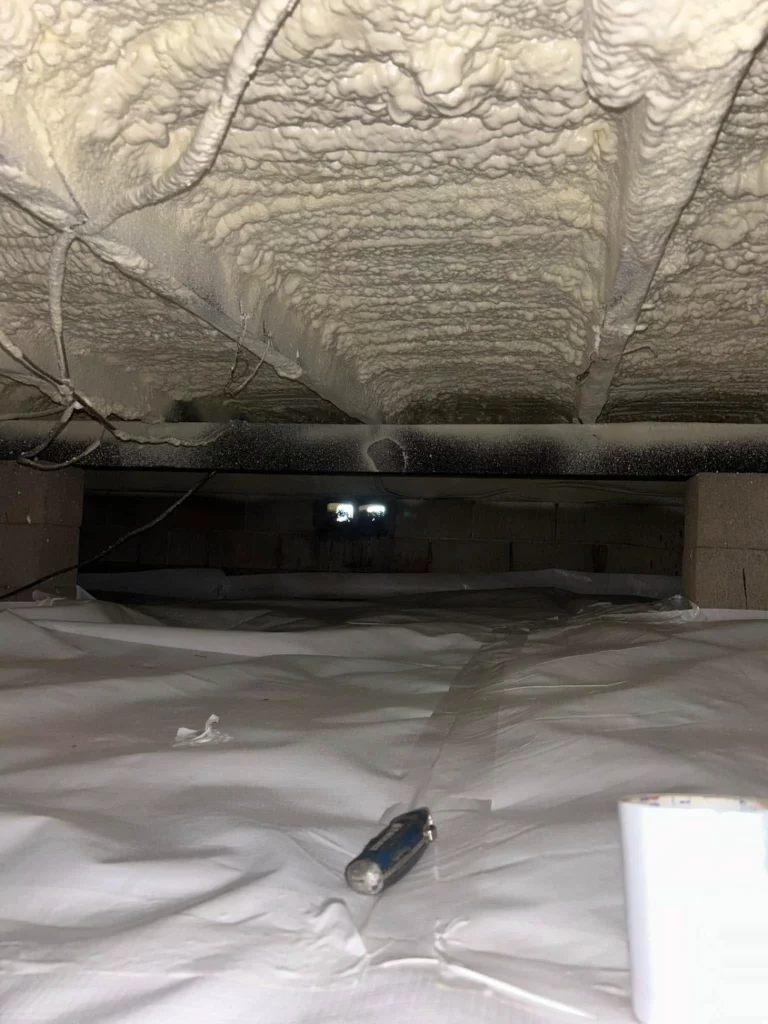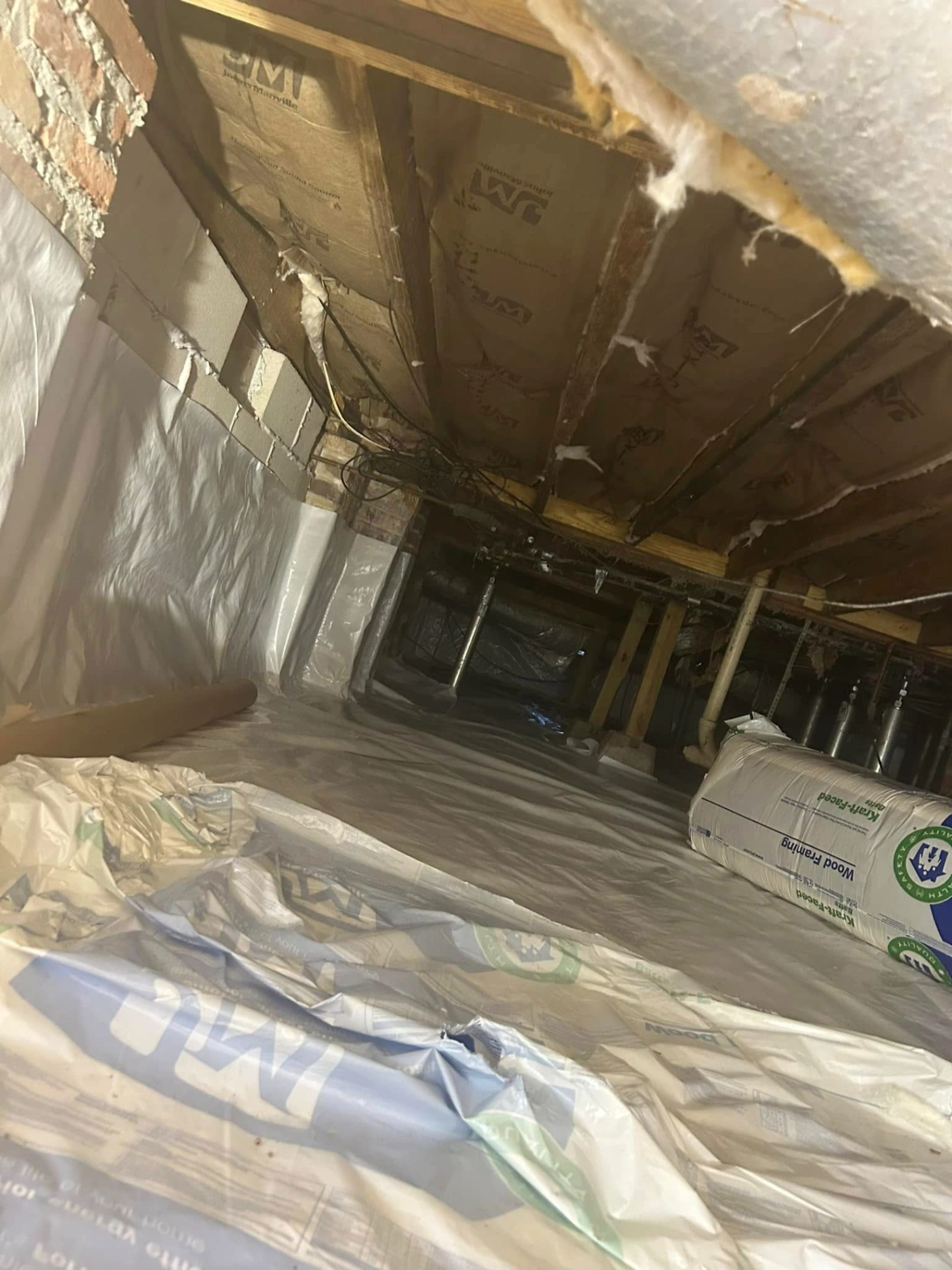Crawl space encapsulation directly and positively affects a home’s market value. By sealing the crawl space with a heavy-duty vapor barrier, conditioning the air, and insulating the walls, encapsulation turns a potential liability into a valuable asset. This upgrade increases resale value by preventing moisture-related structural damage, improving energy efficiency, and boosting indoor air quality, making the property more attractive and secure for potential buyers. Home appraisers and inspectors often view an encapsulated crawl space as a sign of a well-maintained home, which can contribute to a higher valuation.
This article breaks down the specific ways encapsulation adds value, from preventing costly repairs to enhancing daily comfort. The information here is based on extensive field experience in addressing moisture and insulation issues, providing a practical look at the return on this important home improvement.
Direct and Indirect Value Gains
The financial benefits of an encapsulated crawl space extend beyond a simple line item on an appraisal report. The value comes from both immediate appeal and long-term cost avoidance, which savvy buyers recognize.
A clean, dry, and sealed crawl space is a powerful selling point. For home inspectors and buyers, an open, damp crawl space represents a list of potential problems, including mold, pests, wood rot, and foundation issues. Encapsulation eliminates these worries, presenting the home as a lower-risk investment. This can shorten the time a home sits on the market and may lead to stronger offers.
The indirect value comes from proven energy savings. A study from Advanced Energy found that homeowners with encapsulated crawl spaces could reduce their energy bills by 15% or more. This is because encapsulation helps stabilize the home’s temperature, reducing the workload on HVAC systems. For a potential buyer, lower monthly utility costs make a home more affordable and appealing.
More Than Just a Resale Boost
While the impact on market value is significant, the immediate benefits for the current homeowner are just as important. Encapsulation improves the overall health and durability of the home from the ground up.
Preventing Costly Structural Damage
Moisture is the primary enemy of a home’s foundation and structural supports. An unsealed crawl space allows ground moisture and humid air to collect, creating an ideal environment for mold and mildew growth. The U.S. Environmental Protection Agency highlights that controlling moisture is the most effective way to prevent mold. Constant moisture also leads to wood rot in floor joists and beams, which can result in expensive structural repairs. Encapsulation isolates the home from the earth, keeping the underlying structure dry and sound.
Improving Indoor Air Quality
Many homeowners don’t realize that a large portion of the air they breathe inside their homes originates from the crawl space. Due to a process known as the “stack effect,” air is drawn up from the lowest levels of the house into the living areas. If the crawl space is filled with mold spores, dust mites, and other allergens, those contaminants are circulated throughout the home. By sealing and conditioning the crawl space, you stop this circulation of poor-quality air, creating a healthier living environment.
Bonus Tip: Before deciding on encapsulation, perform a simple smell test at your interior vents. If you notice a musty or earthy odor when the HVAC system kicks on, it’s a strong indicator that air from your crawl space is entering your living space.
Analyzing the ROI of Crawl Space Encapsulation
When considering the cost of encapsulation, it’s helpful to compare it against the potential costs of inaction. While the initial investment can range from a few thousand dollars to over ten thousand, depending on the size and condition of the crawl space, the expenses it helps avoid are often much higher.
Projects that improve a home’s fundamental condition, like insulation and moisture control, tend to offer a good return. While direct ROI figures for encapsulation can be elusive, reports like the Remodeling Magazine’s 2023 Cost vs. Value Report show that even minor jobs like attic insulation can recoup over 100% of their cost at resale. Encapsulation offers a similar, if not greater, value proposition by protecting the entire home’s structure and improving its efficiency.
Cost of Inaction vs. Encapsulation Investment
Of course. Here is the revised markdown table with the specific price ranges removed from the “Estimated Cost of Repair/Mitigation” column, while keeping the rest of the content and all formatting intact.
| Potential Problem without Encapsulation | Estimated Cost of Repair/Mitigation | Encapsulation Investment |
|---|---|---|
| Mold Remediation | Significant Expense | A component of the total encapsulation cost, but preventative. |
| Wood Rot Repair (Joists/Beams) | Major Structural Expense | Protects wood structures, avoiding these costs. |
| Pest Control & Damage Repair | Ongoing Annual Expense | Seals entry points, reducing pest-related expenses. |
| High Energy Bills | 15%+ higher annually | Reduces HVAC workload, providing continuous savings. |
| Foundation Repair | Potentially Catastrophic Expense | Helps stabilize moisture levels, protecting the foundation. |

Things to Consider Before Making a Decision
To ensure the best return on your investment, several factors must be evaluated before moving forward with encapsulation.
- Assess the Current Condition: First, determine if there are existing issues that need attention. This includes checking for standing water, active leaks, mold growth, or pest infestations. These problems must be solved before the encapsulation process begins.
- Understand Your Local Climate: Homes in regions with high humidity and significant rainfall, like the Southeast, benefit the most from encapsulation. The constant battle with external moisture makes a sealed system particularly effective.
- Review Material Quality: The long-term success of the system depends on the materials used. The vapor barrier should be thick (12-20 mil) and durable. The seam tape must be high-quality to create a perfect seal, and if a dehumidifier is needed, it should be a commercial-grade unit designed for crawl spaces.
- Verify Contractor Expertise: Proper installation is everything. An incorrectly installed system can trap moisture, making the problem worse. It’s important to work with professionals who understand building science and have a proven track record to ensure every installation is done correctly.
Bonus Tip: When getting quotes, ask contractors what specific steps they take to prepare the crawl space. A thorough proposal will include cleaning, grading, drainage solutions (if needed), and sealing all air leaks before any liner is installed.
Get a Professional Assessment
Understanding the specific conditions of your home’s crawl space is the first step toward making an informed decision. Premier Insulation GA brings years of hands-on experience to ensure every installation is done correctly. For a detailed evaluation of your property’s needs, you can contact us at (229) 554-3939 or send an email to premiereinsulationga@gmail.com to discuss a tailored solution.
Sources
- Advanced Energy – This non-profit research organization provides data on energy savings related to sealed crawl spaces.
- U.S. Environmental Protection Agency (EPA) – The EPA offers official guidance on the importance of moisture control for preventing mold in homes.
- Remodeling Magazine’s 2023 Cost vs. Value Report – This annual report analyzes the ROI for various home improvement projects across the United States.
FAQS
Does crawl space encapsulation really prevent pests?
Yes, it’s a very effective pest deterrent. By sealing vents, cracks, and other entry points, encapsulation makes it much more difficult for rodents, insects, and other pests to enter your home from the ground. The dry environment is also less hospitable to termites and wood-boring insects.
Will an encapsulated crawl space pass a home inspection?
Absolutely. In fact, it’s a major plus during a home inspection. Inspectors will note the clean, dry conditions and the absence of moisture-related issues. It signals to both the inspector and the potential buyer that the home has been proactively maintained.
How does encapsulation affect homeowners’ insurance?
While it may not directly lower your premiums, encapsulation can reduce your risk of filing a claim. Water damage is one of the most common and expensive types of homeowners’ insurance claims. By preventing moisture intrusion and mold, you lower the likelihood of needing to file such a claim.
Can I still use my crawl space for storage after it has been encapsulated?
Yes, and it’s one of the great side benefits. An encapsulated crawl space becomes a clean, dry, and usable storage area. It’s perfect for storing seasonal decorations, tools, and other items without worrying about them being damaged by moisture or pests.
What maintenance is required for an encapsulated crawl space?
Maintenance is minimal. It typically involves an annual check-up to ensure the vapor barrier is intact and the dehumidifier is functioning correctly. The dehumidifier’s filter will also need to be cleaned or replaced periodically, usually once or twice a year.
Is Encapsulation the Right Investment for Your Home?
Crawl space encapsulation is more than just a repair; it’s a long-term investment in your home’s health, durability, and market value. It protects the structural integrity of your property, lowers energy costs, and creates a healthier living environment. By turning a problematic area into a functional and stable part of the home, encapsulation provides a tangible return that both you and future buyers will appreciate. Before making a decision, evaluate your home’s specific condition and your long-term property ownership goals.


